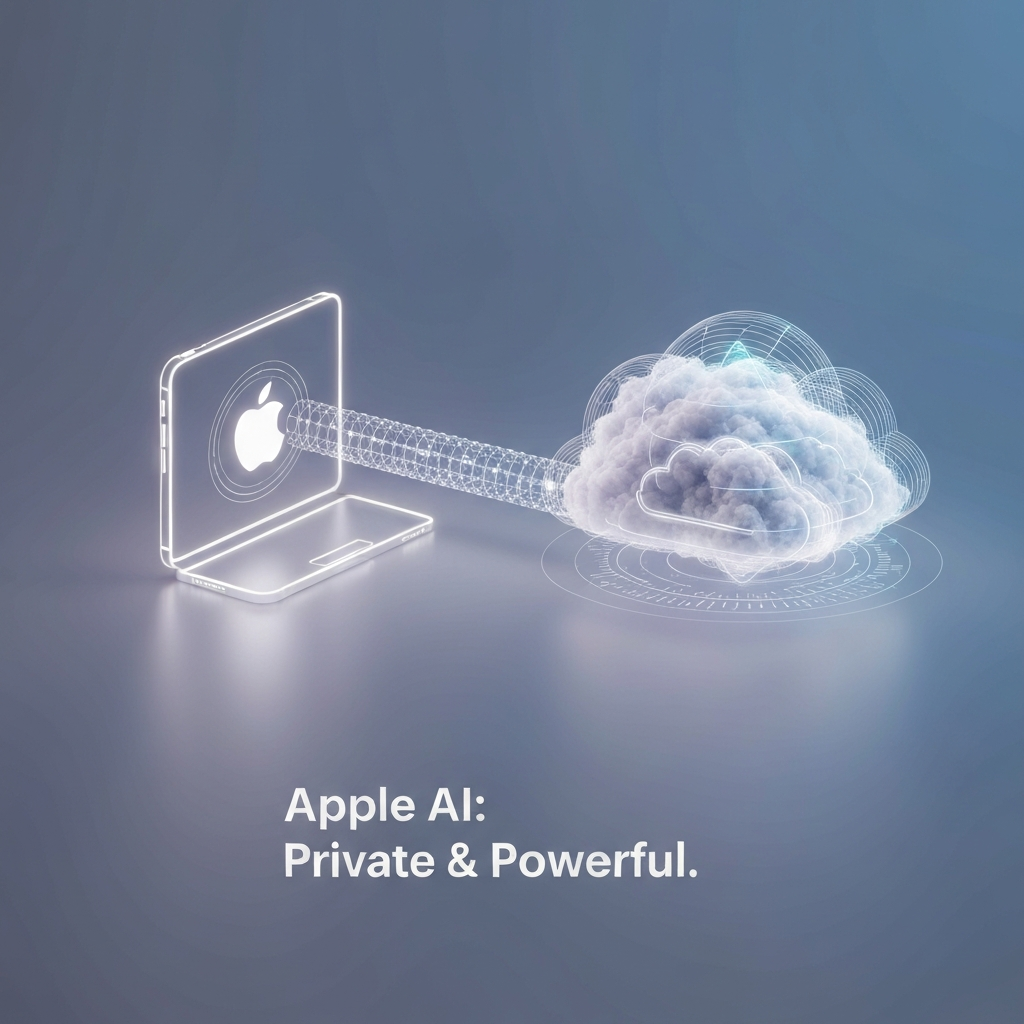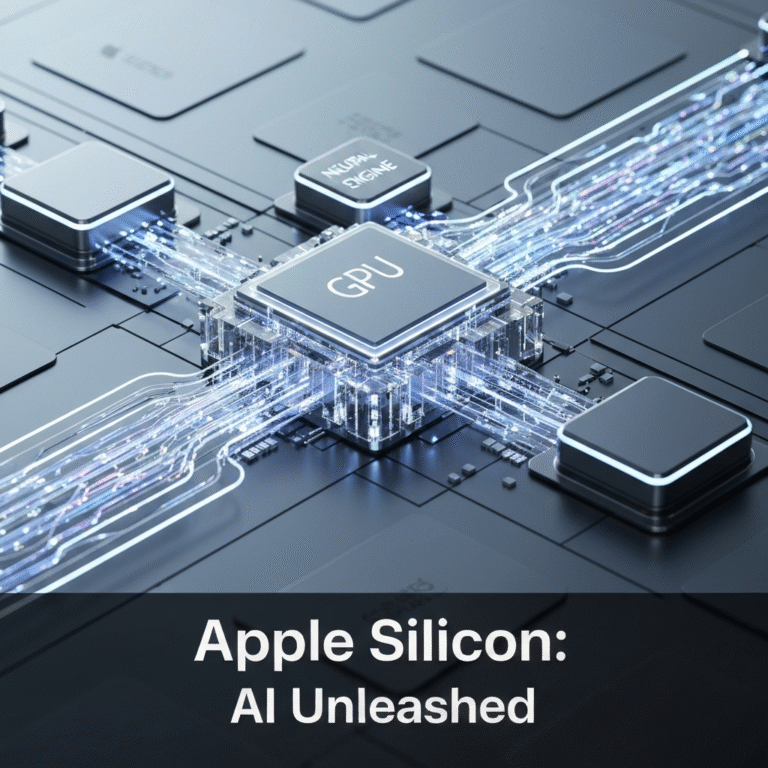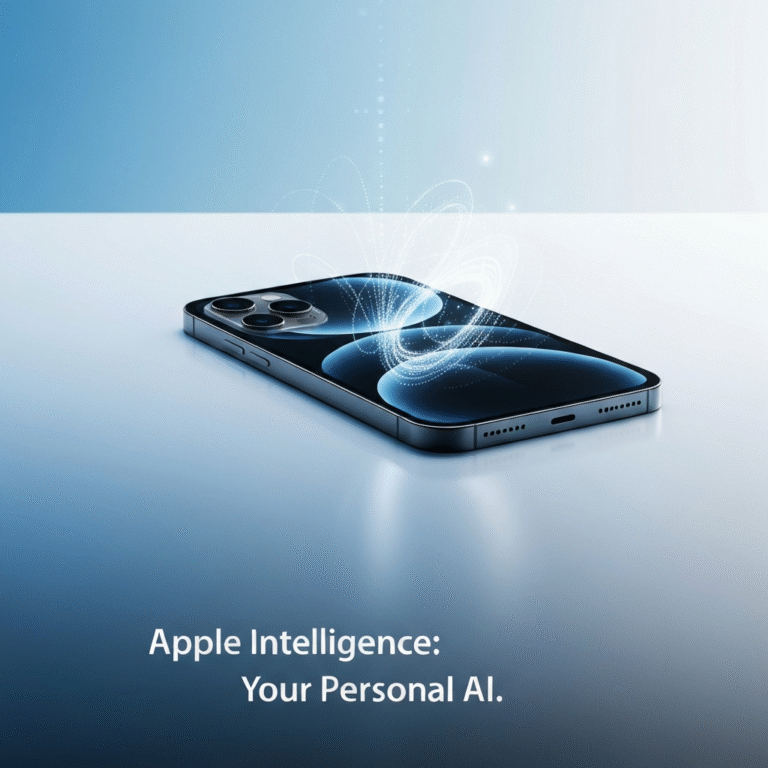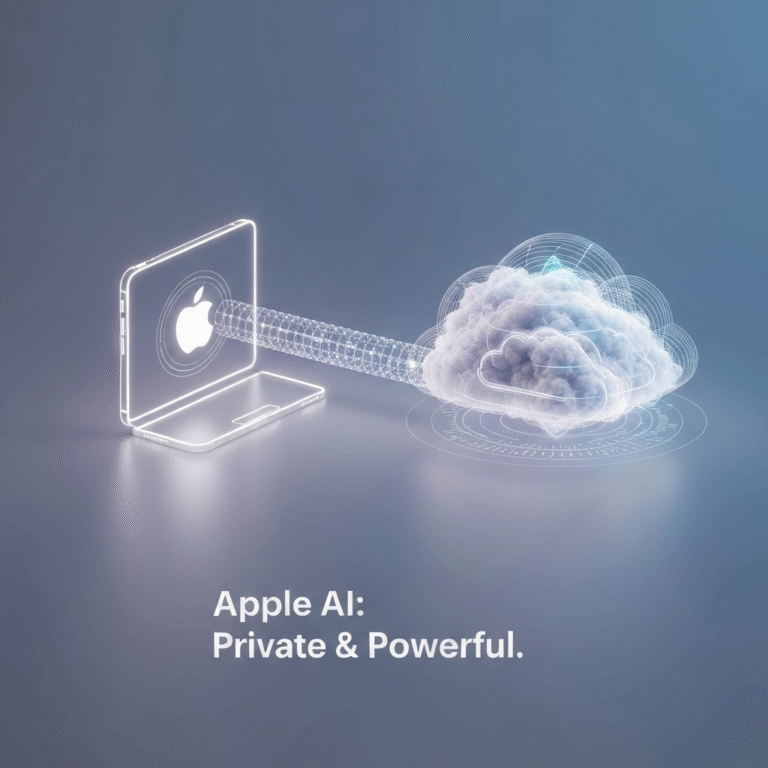
With the launch of Apple Intelligence, a critical question has emerged: Is Apple's new Private Cloud Compute (PCC) as secure as its legendary on-device processing? For years, users have trusted Apple to keep their personal data on their devices. Now, as some tasks are sent to the cloud, many are wondering if that privacy promise holds. The answer is rooted in a strategy designed for one specific goal: security parity. This article provides the definitive, easy-to-understand comparison of Apple's on-device AI and Private Cloud Compute. We will break down their security models side-by-side, clearly delineate which tasks are processed locally versus in the cloud, and explain what makes Apple's approach fundamentally different from other cloud AI solutions. This is the complete guide to understanding Apple's AI privacy strategy.
The Core of Apple's AI Privacy: A Side-by-Side Comparison
Apple Intelligence is built on a foundation of privacy, using a two-part strategy to handle your requests: powerful on-device processing and the groundbreaking Private Cloud Compute (PCC). The central question for many users is whether the cloud component is as secure as the processing done locally on their iPhone, iPad, or Mac. This section provides a direct Apple AI security comparison to clarify how this unified system protects your data.
Private Cloud Compute vs. On-Device AI: A Direct Security Comparison
The primary goal of Apple's strategy is to achieve security parity, meaning that your data is protected to the same high standard whether it's processed on your device or in the cloud. The difference isn't the level of security, but the level of computational power required for a given task.
| Feature | On-Device AI | Private Cloud Compute (PCC) |
|---|---|---|
| Processing Location | Locally on your device's chip (e.g., A17 Pro, M-series). | Specialized, secure Apple Silicon servers. |
| Data Handling | Personal data never leaves your physical device. | Stateless processing; data is never stored, logged, or used for training. It's erased after the request is complete. |
| Security & Privacy Guarantees | The ultimate standard for privacy as data is processed in an environment you fully control. | Designed with no privileged access for Apple employees. The system's code is publicly available for independent verification. |
So, is Private Cloud Compute as secure as on-device processing? Apple has engineered it to be. The system is designed to ensure that even when your data leaves your device, it remains private and secure.
A Unified Framework for Apple AI Privacy and Security
It's best to view on-device processing and PCC not as separate entities, but as two parts of a single, intelligent system. This framework is a cornerstone of Apple AI privacy. The system automatically determines the most private and efficient way to handle a request. This approach combines the best of both worlds: the robust computer security of local processing with the immense power of cloud security, all without compromising your data. This integrated strategy is a significant step forward for AI security, ensuring user information remains protected by default.
Where Your Data Goes: AI Task Allocation Explained
Understanding the division of labor between your device and Private Cloud Compute is key to trusting Apple Intelligence. The system is designed to handle as much as possible locally, only reaching out to the cloud when absolutely necessary for more complex requests. This section breaks down the Apple AI task allocation.
Which Tasks Use On-Device AI Versus Private Cloud Compute?
The decision is based on the complexity and personal context of your request. Here’s a clear breakdown of Apple Intelligence on-device tasks versus those handled by PCC.
| On-Device AI Tasks (For Speed & Privacy) | Private Cloud Compute Tasks (For Power & Complexity) |
|---|---|
|
|
Understanding Apple Intelligence Features: A Practical Report
The functionality of Apple Intelligence is designed to be seamless, so you often won't even notice whether a task is processed on-device or in the cloud. The Apple Intelligence report from its announcement highlights several key capabilities:
* Writing Tools: System-wide tools to rewrite, proofread, and summarize text.
* Image Playground: Create images in three styles: Animation, Illustration, or Sketch.
* Genmoji: Create original emoji characters based on text descriptions.
* Siri's Evolution: Siri is now more natural, contextually aware, and can take actions within apps.
These Apple AI features are the practical application of its privacy-focused architecture. The system intelligently routes your request to the right place—device or PCC—to deliver the desired result without compromising your data.
Building Trust: Transparency, Misconceptions, and What Makes Apple Different
Trust is the most critical component of personal AI. Apple is taking unprecedented steps to ensure users understand how their data is handled, directly addressing common misconceptions and highlighting what makes its approach to cloud AI privacy unique.
Can Apple See My Data in the Cloud? The Definitive Answer.
No. When your data is sent to Private Cloud Compute, it is cryptographically secured, and Apple does not have the key to decrypt it. The servers are designed to be "stateless," meaning your data is processed to fulfill your request and then immediately deleted. It is never stored, and it is never used to train Apple's AI models. This commitment to Apple AI data privacy is a core tenet of their system, ensuring that even when using Private Cloud Compute, your privacy is paramount.
What Makes Apple's Cloud AI Different From Other Companies?
The key differentiator for Apple's cloud AI is its verifiable transparency and privacy-first architecture. Here’s what makes Apple's approach unique:
1. Stateless Servers: Unlike other cloud AI services that may store your data to improve their models, PCC does not. Your data is used for your request and nothing else.
2. Verifiable Code: Apple has made PCC software images publicly available in a Virtual Research Environment (VRE) for independent security researchers to verify the code running in production, as detailed by Apple Security Research. This level of Private Cloud Compute transparency is unprecedented and builds significant Apple AI trust.
3. On-Device Default: Apple's system defaults to on-device processing whenever possible, whereas many other AI solutions are cloud-first. This fundamentally reduces the amount of data that ever needs to leave your device.
This approach directly addresses the core concerns users have about cloud AI privacy and sets a new standard for the industry.
Understanding Private Cloud Compute Limitations and Functionality
While powerful, it's important to understand the Private Cloud Compute limitations and clear up some Apple AI misconceptions. PCC is not a general-purpose cloud AI like ChatGPT; it is a specialized extension of your device's processor. You don't "log in" to PCC. Apple Intelligence determines how to use it automatically and seamlessly. Its sole function is to provide more computational power for specific Apple Intelligence features while upholding the same privacy standards as your device. This focused functionality is a feature, not a bug, as it ensures your personal data is never exposed to a broad, general-purpose AI model in the cloud.
About the Author
Hussam Muhammad Kazim is an AI Automation Engineer with a keen focus on the intersection of artificial intelligence and user privacy. He specializes in analyzing the security architectures of emerging AI systems.
Frequently Asked Questions
Is Private Cloud Compute as secure as on-device AI?
Apple has engineered Private Cloud Compute (PCC) to achieve "security parity" with on-device processing. This means it's designed to be just as secure. Data sent to PCC is encrypted, processed on stateless servers (meaning it's never stored), and Apple itself cannot access it. The system's code is also open to inspection by independent security experts to verify these claims.
What is the main difference between on-device and cloud AI?
The main difference is location and scale. On-device AI processes data directly on your device's chip, ensuring your personal information never leaves your control. Cloud AI sends data to external servers for processing, which allows for more complex and computationally intensive tasks. Apple's Private Cloud Compute is a hybrid model designed to offer the power of the cloud while enforcing the privacy standards of on-device processing.
Which specific tasks use Private Cloud Compute?
Private Cloud Compute is used for more complex tasks that require greater processing power than your device can offer, but still need access to your personal context. Examples include generating highly detailed, photorealistic images with Image Playground or creating a comprehensive summary of a long audio recording.
How does Apple's AI ensure data privacy?
Apple's AI ensures data privacy through a two-part strategy. First, it defaults to processing as many tasks as possible directly on your device. Second, for more complex tasks, it uses Private Cloud Compute, a system with stateless servers that do not store user data and which Apple cannot access. This entire process is designed to keep your personal information private and secure.




